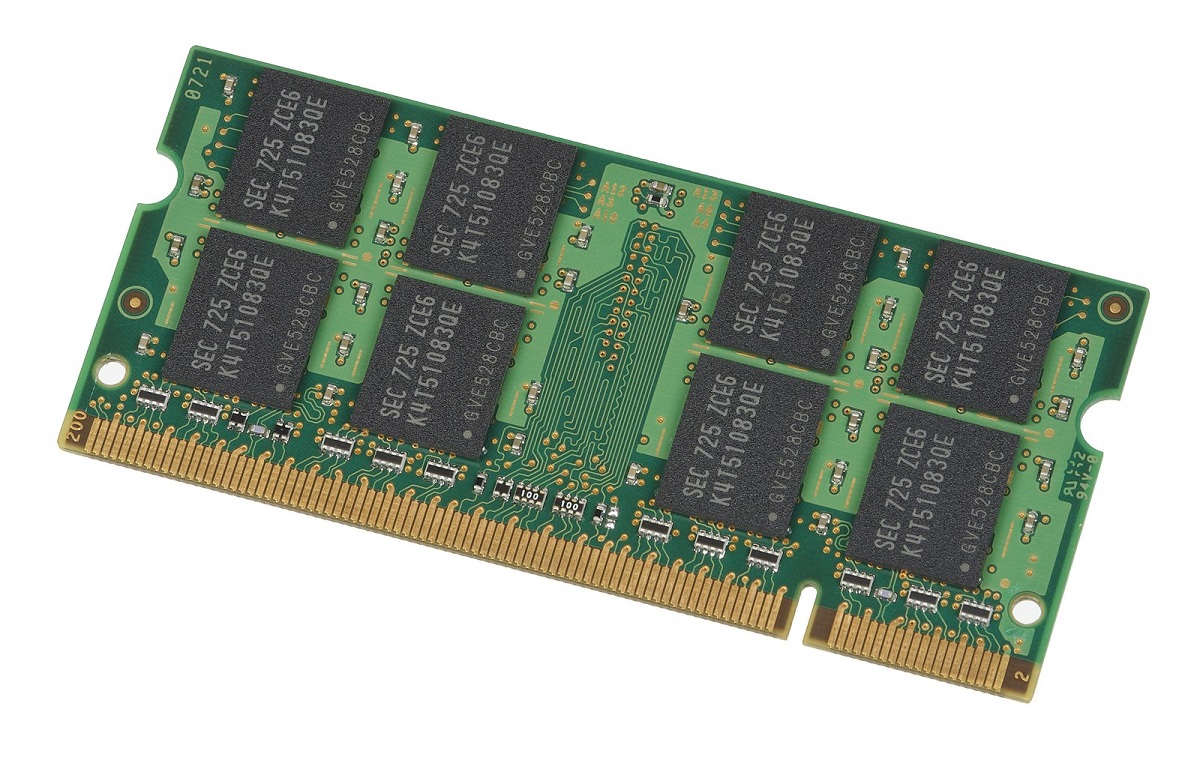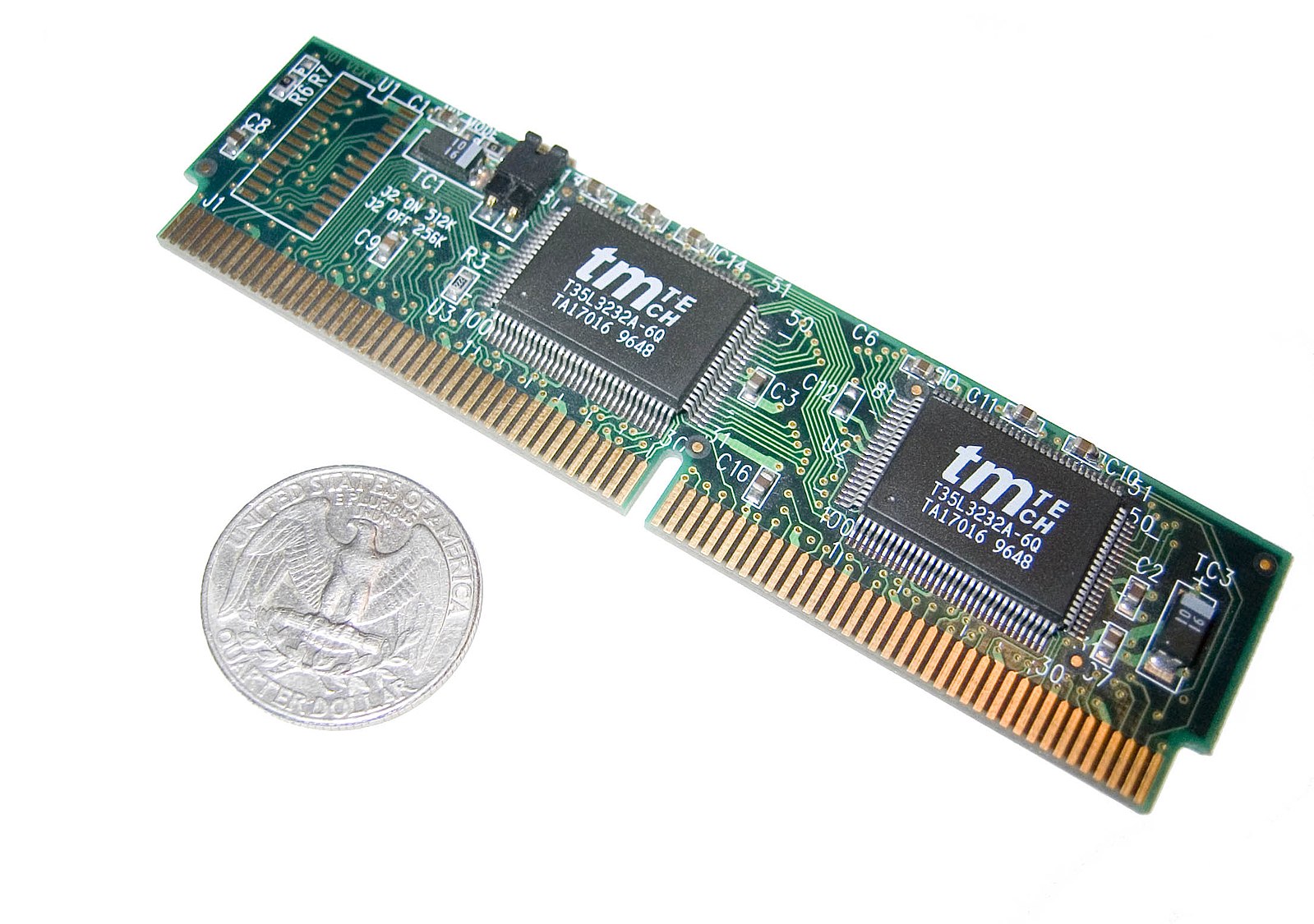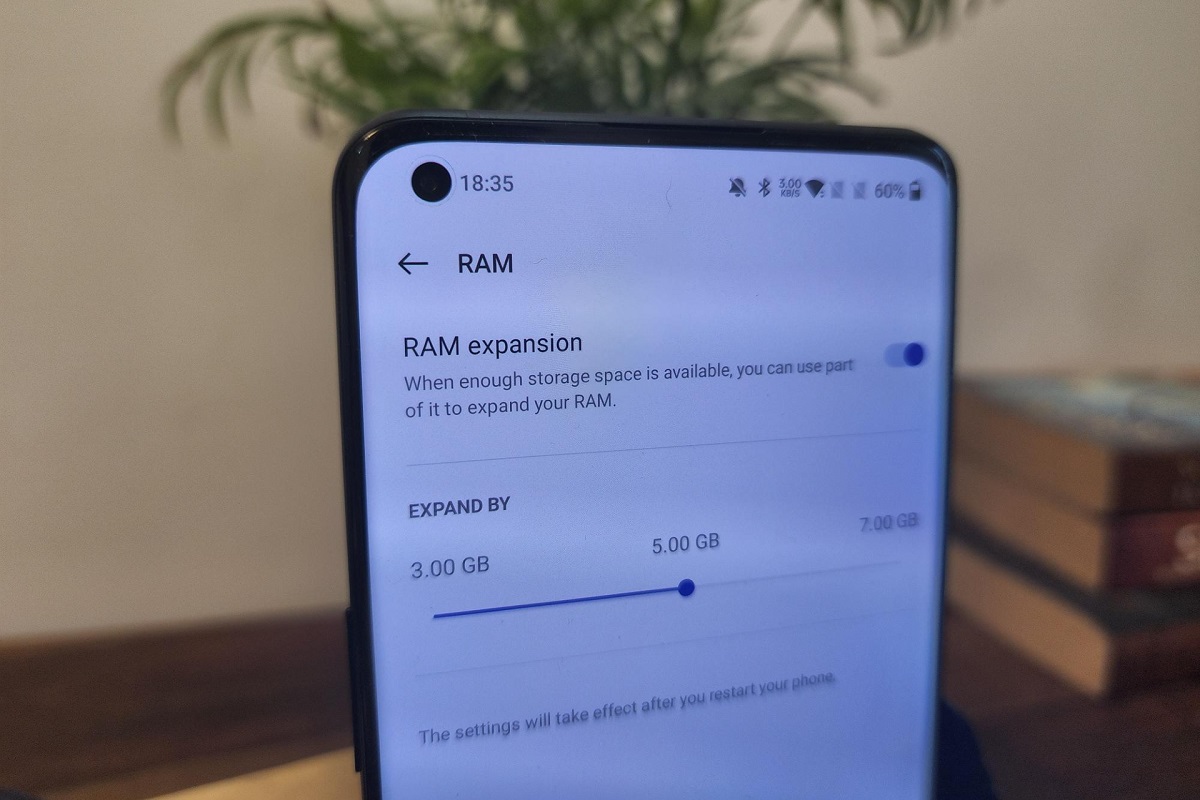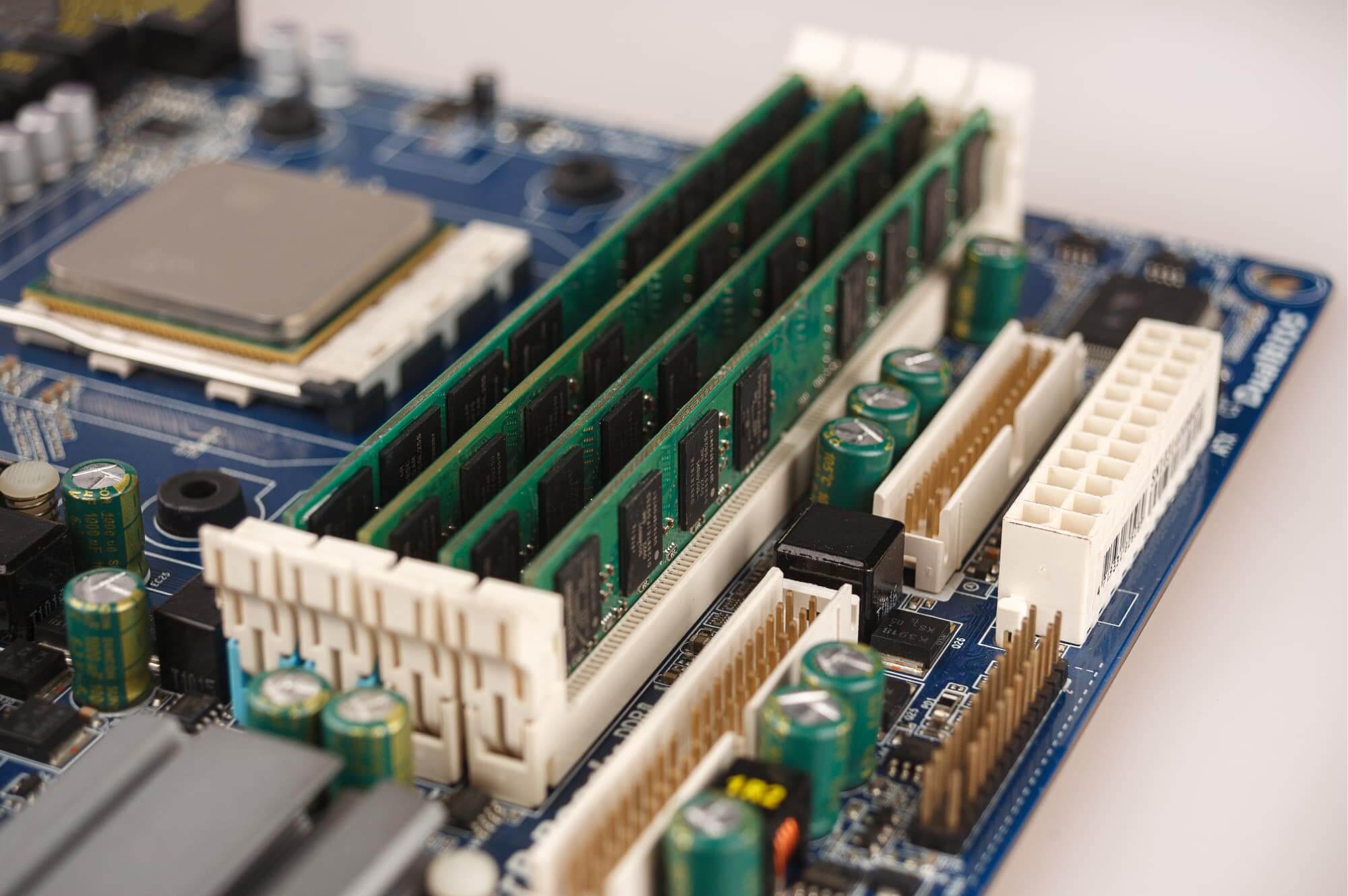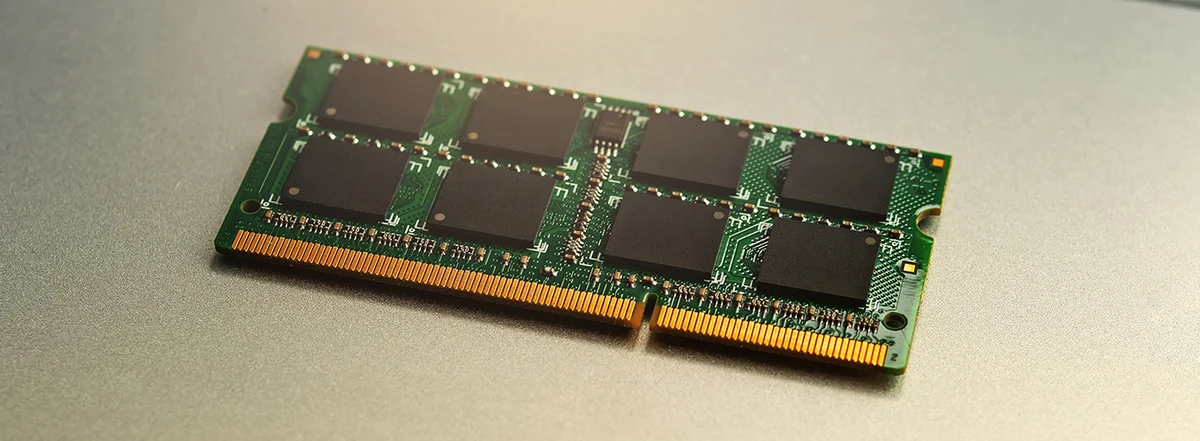Introduction
Welcome to the world of RAM caching! In this fast-paced digital era, computer performance is a top priority. As the demand for faster and more efficient systems grows, optimizing the usage of system resources becomes crucial. One such resource is Random Access Memory (RAM), which plays a vital role in enhancing the overall performance of a computer.
RAM caching is a technique that improves system performance by storing frequently accessed data in the RAM instead of fetching it from slower secondary storage devices such as hard drives or solid-state drives. By keeping this data readily available in a high-speed memory, RAM caching significantly reduces the time it takes for the system to retrieve information.
But how much RAM should be allocated for caching? This is a common question among both casual users and IT professionals alike. The answer depends on various factors, such as the type of applications you use, the specific memory requirements of those applications, and the overall system configuration.
In this insightful article, we will explore the importance of RAM caching and provide guidance on determining the optimal RAM cache size for your system. We will discuss the factors that need to be considered, the impact of RAM cache size on system performance, and how to strike the right balance between caching and other system resources. Additionally, we will explore tools and techniques to monitor and manage RAM cache size effectively.
So, whether you are an average computer user looking to boost your system’s speed or a tech enthusiast delving into the intricacies of system optimization, join us on this RAM caching journey as we unravel the secrets to optimize your system’s performance and ensure a smooth computing experience.
What is RAM caching?
RAM caching is a technique used to improve the performance of a computer system by storing frequently accessed data in the Random Access Memory (RAM). RAM, also known as primary memory, is a fast and temporary storage medium that provides quick access to data for the CPU.
In a typical computer system, data is stored in various storage devices such as hard drives or solid-state drives. However, accessing data from these storage devices is relatively slower compared to accessing data from the RAM. This is because the RAM uses electronic circuits to read and write data, while storage devices rely on mechanical components or complex memory management systems.
RAM caching works by copying frequently accessed data from the storage devices into the RAM. When the system needs to access that data again, it can retrieve it from the faster RAM instead of fetching it from the slower storage devices. This results in significantly reduced read/write times and overall improved system performance.
There are two main types of RAM caching: file caching and disk caching.
File caching: File caching involves caching entire files into the RAM. When a file is accessed, it is read from the storage device into the RAM. Subsequent access to the same file can be served directly from the RAM, eliminating the need to fetch it from the storage device again. File caching is especially useful for applications that repeatedly access large files, such as video editing software or database management systems.
Disk caching: Disk caching, also known as block caching, involves caching smaller chunks of data called blocks or pages. These blocks represent smaller segments of larger files or recently accessed data. Disk caching is more commonly used for smaller-scale applications, where caching entire files may not be necessary. Examples of disk caching include web browsers caching web pages or operating systems caching recently used data.
By utilizing RAM caching, computers can load frequently accessed data faster and provide a smoother user experience. It is important to note that RAM caching is different from virtual memory, where the RAM is used as an extension of the storage device’s memory capacity. RAM caching focuses on optimizing performance by storing frequently used data in the RAM for quicker access.
Why is RAM caching important?
RAM caching plays a crucial role in enhancing system performance and improving overall user experience. Here are several key reasons why RAM caching is important:
1. Speed and responsiveness: RAM caching significantly reduces the time it takes for the system to access frequently used data. By keeping this data readily available in the high-speed RAM, the system can quickly retrieve it without the need to fetch it from slower storage devices. This leads to faster application load times, quicker file access, and overall improved system responsiveness.
2. Improved multitasking: With the ever-increasing demand for multitasking, RAM caching becomes even more important. When multiple applications are running simultaneously, they often compete for system resources, causing delays and performance degradation. By caching frequently used data in the RAM, the system can allocate resources more efficiently, allowing for smoother multitasking and seamless switching between applications.
3. Reduced energy consumption: RAM caching can help reduce energy consumption by minimizing the use of power-hungry storage devices. Retrieving data from a storage device requires more energy compared to accessing it from the RAM. By utilizing RAM caching, the system can minimize the frequency of accessing the storage devices, resulting in lower energy consumption and improved overall energy efficiency.
4. Longer lifespan of storage devices: Constantly accessing data from storage devices can contribute to their wear and tear. By caching frequently used data in the RAM, the system reduces the frequency of accessing the storage devices, extending their lifespan. This is particularly beneficial for devices like solid-state drives (SSDs), which have a limited number of read and write cycles.
5. Enhanced scalability: RAM caching allows for greater scalability as it provides a buffer between the CPU and slower storage devices. As the amount of RAM increases, more data can be cached, leading to improved performance. This scalability is particularly useful in environments where data access patterns fluctuate or when dealing with large datasets.
6. Cost-effective solution: Compared to upgrading storage devices to achieve faster read and write speeds, utilizing RAM caching can be a cost-effective solution. By optimizing the usage of existing hardware resources, RAM caching can provide a noticeable performance boost without the need for significant hardware investments.
By leveraging the benefits of RAM caching, users can enjoy a faster, more responsive system that can handle demanding tasks more efficiently. Whether it’s for gaming, multimedia editing, or professional work, RAM caching plays a pivotal role in ensuring a smooth and efficient computing experience.
Factors to consider when deciding how much RAM should be cached
The optimal amount of RAM to allocate for caching depends on various factors. Understanding these factors will help you make an informed decision and strike the right balance between system performance and resource utilization. Here are some key factors to consider:
1. Application usage: The type of applications you use plays a vital role in determining the amount of RAM to allocate for caching. Memory-intensive applications such as video editing software or virtual machines benefit from a larger RAM cache as they frequently access large files or require ample memory to function smoothly.
2. Workload patterns: Analyzing your workload patterns is essential in identifying the data that is frequently accessed and could benefit from caching. If you have a predictable pattern of accessing specific files or data sets, allocating more RAM for caching can significantly improve performance.
3. Available RAM: It’s important to consider the total amount of RAM available on your system. While allocating more RAM for caching can improve performance, you also need to ensure that enough RAM is left for other applications and system processes. Striking the right balance is crucial to avoid resource constraints.
4. System resources: Consider the overall resource requirements of your system. If you are running multiple resource-intensive applications simultaneously, allocating a larger portion of RAM for caching may not be advisable as it could lead to resource contention and performance degradation.
5. System configuration: The hardware configuration of your system plays a significant role in determining how much RAM should be allocated for caching. Factors like the processing power of the CPU, the speed of storage devices, and the maximum memory capacity supported by your system all influence the caching capabilities.
6. Future scalability: Consider your future needs and the potential for system expansion. If you anticipate an increase in workload or plan to install additional memory in the future, it might be wise to allocate a larger portion of RAM for caching to accommodate future growth.
7. Monitoring and adjustment: It’s essential to monitor the performance of your system and regularly assess the effectiveness of your caching strategy. Tools and techniques are available to help you monitor cache hit rates, CPU and memory usage, and overall system performance. By closely monitoring these metrics, you can make adjustments to the cache size if necessary.
Examining these factors and finding the optimal balance for your specific system requirements will ensure efficient utilization of resources and maximize the benefits of RAM caching. It’s important to note that the optimal cache size may vary from one system to another, so experimentation and fine-tuning may be necessary to find the most suitable configuration.
Memory requirements of different applications
When determining the amount of RAM to allocate for caching, it is crucial to consider the memory requirements of the applications you frequently use. Different applications have varying memory needs, and understanding these requirements will help you allocate the right amount of RAM for optimal performance. Here are common types of applications and their memory requirements:
1. Web browsers: Web browsers are among the most commonly used applications, and their memory usage can vary depending on factors like the number of open tabs, extensions, and the complexity of the web content being accessed. Modern browsers, especially those with numerous tabs or running heavy JavaScript applications, may benefit from additional RAM for caching to enhance browsing performance.
2. Office productivity software: Applications like word processors, spreadsheets, and presentation software generally have modest memory requirements. However, when dealing with large and complex documents, or when working on multiple files simultaneously, allocating some RAM for caching can help improve load times and overall responsiveness.
3. Multimedia editing software: Video editing, graphic design, and audio production applications often require substantial memory resources. These applications typically work with large files and processing-intensive tasks, and allocating a considerable amount of RAM for caching can significantly improve workflow efficiency and prevent lag during real-time editing or rendering.
4. Virtualization software: Virtual machine software allows users to run multiple operating systems simultaneously. Virtualization requires a significant amount of memory as each virtual machine requires its own allocated RAM. To ensure smooth performance, it is essential to allocate sufficient RAM for both the virtual machines and caching to avoid resource contention and performance degradation.
5. Gaming: Video games are known to be memory-intensive applications, as they often require substantial amounts of both system RAM and GPU memory. In addition to allocating enough RAM for gaming, allocating a portion for caching can help reduce loading times, improve game performance, and minimize in-game stuttering or frame drops.
6. Database management systems: Database applications typically require ample memory to efficiently manage and process large amounts of data. Allocating a sizable amount of RAM for caching can improve database performance by reducing disk I/O and enhancing query execution speed.
7. Scientific and engineering software: Applications used for scientific research, engineering simulations, and data analysis can have high memory requirements. These applications often process massive datasets and complex calculations, making them ideal candidates for larger RAM caches to ensure faster data access and computation speeds.
It’s important to note that while these are common examples, the memory requirements can vary based on factors such as the version of the application, specific use cases, and the size and complexity of the data being processed. Consult the documentation or system requirements of your specific applications for more precise memory guidelines.
By considering the memory requirements of the applications you use regularly, you can allocate the appropriate amount of RAM for caching, ensuring optimal performance and a seamless user experience.
Impact of RAM cache size on system performance
The size of the RAM cache has a significant impact on the overall performance of a computer system. By understanding the relationship between the cache size and system performance, you can make informed decisions when allocating RAM resources. Here are key points to consider regarding the impact of RAM cache size:
1. Improved data access speed: A larger RAM cache allows for a greater amount of frequently accessed data to be stored in memory. This enables the system to retrieve data quickly, resulting in faster application load times, reduced file access latency, and improved overall system responsiveness.
2. Enhanced multitasking capabilities: With a larger RAM cache, the system can maintain a larger working set of data in memory. This is particularly beneficial when running multiple applications simultaneously, as it allows for smoother multitasking and minimizes the need to constantly fetch data from slower storage devices.
3. Reduced disk I/O operations: RAM caching reduces the number of disk input/output (I/O) operations needed to access data. With larger cache sizes, the system can keep more data in memory, leading to fewer disk reads/writes. This reduces wear on storage devices, lowers energy consumption, and decreases the overhead associated with disk I/O.
4. Minimized bottlenecks: When the RAM cache is appropriately sized, it can alleviate bottlenecks that occur when the system relies heavily on slower storage devices. By caching frequently accessed data in the faster RAM, the system can bridge the performance gap between the CPU and storage, resulting in smoother data flow and improved overall system performance.
5. Reduced CPU idle time: With an adequately sized RAM cache, the CPU spends less time waiting for data to be fetched from storage devices. This reduces CPU idle time, allowing the processor to perform tasks more efficiently and increasing overall system productivity.
6. Customizable performance trade-offs: The size of the RAM cache allows for customization based on your specific needs. You can allocate a larger portion of RAM for caching to prioritize performance, or allocate a smaller portion to conserve resources for other applications or processes.
7. Diminishing returns at larger cache sizes: While a larger cache size generally improves performance, there is a point of diminishing returns. Once the cache size exceeds the amount of frequently accessed data, the benefit becomes less significant. It is important to find the optimal balance where an increase in cache size no longer yields noticeable performance gains.
It’s worth noting that the impact of RAM cache size on system performance can vary depending on the type of applications being used, the specific workload patterns, and overall system configuration. It is recommended to monitor system metrics and experiment with different cache sizes to determine the most optimal configuration for your specific needs.
By carefully considering the impact of RAM cache size, you can optimize system performance and ensure a smooth computing experience that meets your requirements.
Balancing RAM cache size with other system resources
Allocating the right amount of RAM for caching involves finding a balance between optimizing system performance and considering the availability of other system resources. Balancing RAM cache size with other resources ensures efficient utilization and prevents resource constraints. Here are key factors to consider:
1. Available RAM: Consider the total amount of RAM available on your system. While allocating a larger portion of RAM for caching can improve performance, it is essential to reserve enough RAM for other applications and system processes. Striking the right balance ensures that there is sufficient memory available for all system functions.
2. CPU utilization: RAM caching can reduce CPU idle time as data can be quickly retrieved from the cache instead of waiting for slower storage devices. However, it is important to consider other CPU-intensive tasks and ensure that the CPU has enough resources to handle those tasks alongside caching. Monitoring CPU utilization helps in determining the appropriate RAM cache size.
3. Disk space: Caching data in RAM reduces the reliance on disk storage, which can help conserve disk space. However, it is crucial to ensure that sufficient disk space is available for essential system operations and data storage. Regularly monitor disk usage to prevent resource constraints and maintain sufficient space for caching as well as other storage needs.
4. Power consumption: RAM caching can help reduce energy consumption by minimizing the frequency of accessing power-hungry storage devices. However, it is important to consider the overall power utilization of the system, including the CPU and other components. Balancing RAM cache size with power consumption ensures both performance improvements and energy efficiency.
5. Virtual memory usage: When allocating RAM for caching, consider the impact on virtual memory usage. Virtual memory uses a portion of the disk as an extension of the RAM. Allocating too much RAM for the cache can lead to inadequate virtual memory space, potentially affecting system stability and overall performance. Monitor virtual memory usage and ensure an appropriate balance between RAM caching and virtual memory utilization.
6. Other hardware limitations: Consider the limitations of other hardware components, such as storage devices and the maximum memory capacity supported by your system. While a larger RAM cache can provide performance benefits, you must ensure compatibility with other hardware components and avoid exceeding their capabilities.
7. Workload requirements: Tailor the RAM cache size to meet the specific workload demands of your system. Different applications and tasks have varying memory requirements. Assess the memory needs of your most demanding applications and allocate an appropriate amount of RAM for caching to ensure optimal performance for those tasks.
By carefully balancing the RAM cache size with other system resources, you can ensure efficient utilization of system resources, enhance overall performance, and avoid potential resource constraints. Regular monitoring and adjustments based on system requirements and workload patterns will help maintain a well-balanced system configuration.
Setting the optimal RAM cache size
Setting the optimal RAM cache size entails finding the sweet spot that maximizes performance without sacrificing system resources. While there is no one-size-fits-all answer, following these guidelines can help you determine the optimal cache size for your system:
1. Assess memory requirements: Consider the memory requirements of the applications you frequently use. Analyze their behavior, data access patterns, and the amount of memory they typically consume. This information will help you estimate the amount of RAM required to cache frequently accessed data effectively.
2. Monitor cache hit rates: Use monitoring tools to measure cache hit rates, which indicate how often data is successfully retrieved from the cache instead of being fetched from slower storage devices. Increasing the cache size generally leads to higher hit rates. Continuously monitor and analyze cache hit rates to determine if increasing the cache size results in noticeable performance improvements.
3. Experiment and fine-tune: Since cache size requirements vary depending on system configurations and usage patterns, experimentation is crucial. Start with a moderate cache size and monitor system performance. Gradually increase or decrease the cache size and benchmark the results to determine the optimal balance. Fine-tuning the cache size helps find an efficient configuration for your specific system needs.
4. Consider system limitations: Take into account the limitations of your hardware components, such as the total available RAM and the maximum memory capacity supported. Ensure that the cache size does not exceed these limits to avoid resource constraints or instability issues. Additionally, consider the impact on other system resources, such as CPU utilization and disk space availability.
5. Monitor overall system performance: Keep a holistic view of system performance while adjusting the cache size. Monitor factors like application response times, CPU and memory utilization, disk I/O operations, and overall system responsiveness. Use these metrics to gauge how changes in cache size impact system performance and make necessary adjustments accordingly.
6. Adapt to changing workloads: Workload patterns and resource requirements may change over time. Regularly reassess and adjust the cache size to match the evolving needs of your system. This could involve increasing the cache size for memory-hungry applications or decreasing it if workload patterns shift or system resources become constrained.
7. Consult documentation and expert advice: Consult the documentation and guidelines provided by software vendors, operating system developers, and hardware manufacturers. They often provide recommendations or best practices for setting the optimal cache size based on their specific technologies and configurations.
Through a combination of assessment, monitoring, experimentation, and adapting to changing workloads, you can determine the optimal RAM cache size that maximizes performance while ensuring efficient utilization of system resources. Remember that the optimal cache size is unique to each system, so it may require some iteration and fine-tuning to find the ideal configuration for your specific needs.
Tools and techniques to monitor and manage RAM cache size
Monitoring and managing the RAM cache size is essential to ensure optimal performance and efficient resource utilization. Here are some commonly used tools and techniques to help you effectively monitor and manage the RAM cache size:
1. Task Manager or Resource Monitor: Built-in system monitoring tools like Task Manager in Windows or Resource Monitor in macOS provide real-time information on CPU, memory usage, and disk activity. They can help you monitor overall system performance and assess the impact of the RAM cache on system resources.
2. Performance monitoring software: Third-party performance monitoring software such as CPU-Z, HWiNFO, or iStat Menus provide more detailed insights into system performance. They allow you to monitor memory usage, cache hit rates, and other performance metrics to evaluate the effectiveness of the RAM cache.
3. Command-line tools: Command-line tools like top (Unix/Linux), free (Unix/Linux), and perf (Linux) provide command-line interfaces to monitor various system parameters, including memory usage and cache statistics. These tools offer more advanced monitoring capabilities for users comfortable with the command-line interface.
4. Cache flushing techniques: Sometimes, it may be necessary to manually clear or flush the RAM cache to reclaim memory for other processes. Various operating systems provide methods to flush the cache, such as using the “sync” command in Linux or clearing the system cache in Windows. Be cautious when using this technique, as it can temporarily impact performance until the cache is rebuilt.
5. Operating system settings: Operating systems often provide settings or configuration options to manage the RAM cache size. For example, in Windows, you can adjust the system’s “Max Cached Icons” or “Max Cached Cursors” settings to control the cache size for icons and cursors. Explore your operating system’s documentation or settings to see if there are similar options available.
6. Memory management tools: Memory management tools like MemTest86 or MemTest86+ can help identify and diagnose issues related to RAM and cache. These tools can perform memory tests, detect errors, and provide insights into memory performance, aiding in the management of the cache size and overall system stability.
7. System configuration optimization: Optimizing your system configuration can also impact RAM cache management. Practices such as ensuring you have the latest operating system updates, keeping drivers and firmware up to date, and minimizing unnecessary background processes or startup applications can help improve overall system performance and the effectiveness of the RAM cache.
By utilizing these tools and techniques, you can effectively monitor and manage the RAM cache size. Regular monitoring allows you to make data-driven decisions, adjust cache size as needed, and maintain optimal system performance while leveraging the benefits of RAM caching.
Conclusion
RAM caching is a powerful technique that can significantly improve system performance by storing frequently accessed data in high-speed memory. Understanding the factors that influence the optimal RAM cache size is crucial for maximizing the benefits of this technology.
In this article, we explored the importance of RAM caching and the impact it has on system performance. We discussed the factors to consider when deciding how much RAM should be allocated for caching, including application usage, workload patterns, available RAM, system resources, system configuration, future scalability, and monitoring techniques.
We also delved into the memory requirements of different applications and how they influence the amount of RAM needed for caching. Additionally, we analyzed the impact of RAM cache size on system performance, highlighting the improvements in data access speed, multitasking capabilities, reduced disk I/O, minimized bottlenecks, reduced CPU idle time, customizable performance trade-offs, and the point of diminishing returns.
To balance the RAM cache size with other system resources, considerations such as available RAM, CPU utilization, disk space, power consumption, virtual memory usage, and hardware limitations were discussed. Finding an optimal balance ensures efficient resource utilization while delivering optimal performance.
The article also provided insights into setting the optimal RAM cache size through assessing memory requirements, monitoring cache hit rates, experimentation, considering system limitations, monitoring overall system performance, and seeking guidance from documentation and expert advice.
Lastly, tools and techniques to monitor and manage RAM cache size, such as task managers, performance monitoring software, command-line tools, cache flushing techniques, operating system settings, memory management tools, and system configuration optimization, were covered to help users effectively manage and utilize the RAM cache.
By following these guidelines, individuals can harness the power of RAM caching to enhance their system’s performance, streamline data access, reduce disk I/O, and ensure a smooth and efficient computing experience.







